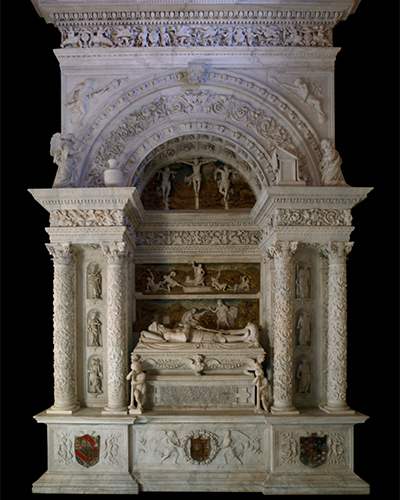Sculptor and marble worker born around the end of 1480 in Carona (Canton Ticino, now Switzerland) who, together with his brother Pietro, opened a workshop in Genoa, working mainly for Spain. In 1512, his brother Pietro made a marble boat for the garden of the palace of the Marquis of Cenete in La Calahorra and in 1520, in the will of Bartolomé Ordoñez, he appears as a subcontractor for part of the tombs of the Fonseca family. His activity in Spain increased as a result of the commission he received from the Marquis of Tarifa for the tomb of his father, Pedro Enríquez, for the chapel of the Chapter of the Cartuja de las Cuevas. Don Fadrique himself commissioned him, together with Bernardino da Bissone - nephew of Pace Gaggini, the author of the tomb of the mother of the Marquis Catalina de Ribera - to make the rest of the sepulchral monuments of his ancestors up to the founder of the Ribera lineage, the 1st Adelantado, and different marble pieces for his palace, today known as Casa de Pilatos. These commissions were followed by those of the Marquise of Ayamonte, two sepulchres and an immense altar, that of Hernando Columbus, a portal for his palace at the Puerta de Goles, possibly for the library, and finally de la Corna, as in 1534 he appears working on the Real Alcázar. But his fame in Spain was not limited to the world of the Sevillian nobility, as is shown by the fact that Francisco Ruiz, bishop of Avila and writer of apostolic letters for Adrian VI, travelled from Rome to Genoa to commission his tomb to be placed in the convent of San Juan de la Penitencia in Toledo, which no longer exists.
Aprile da Carona, Antonio Maria
Circa 1488, Carona - Circa 1535, Carona

